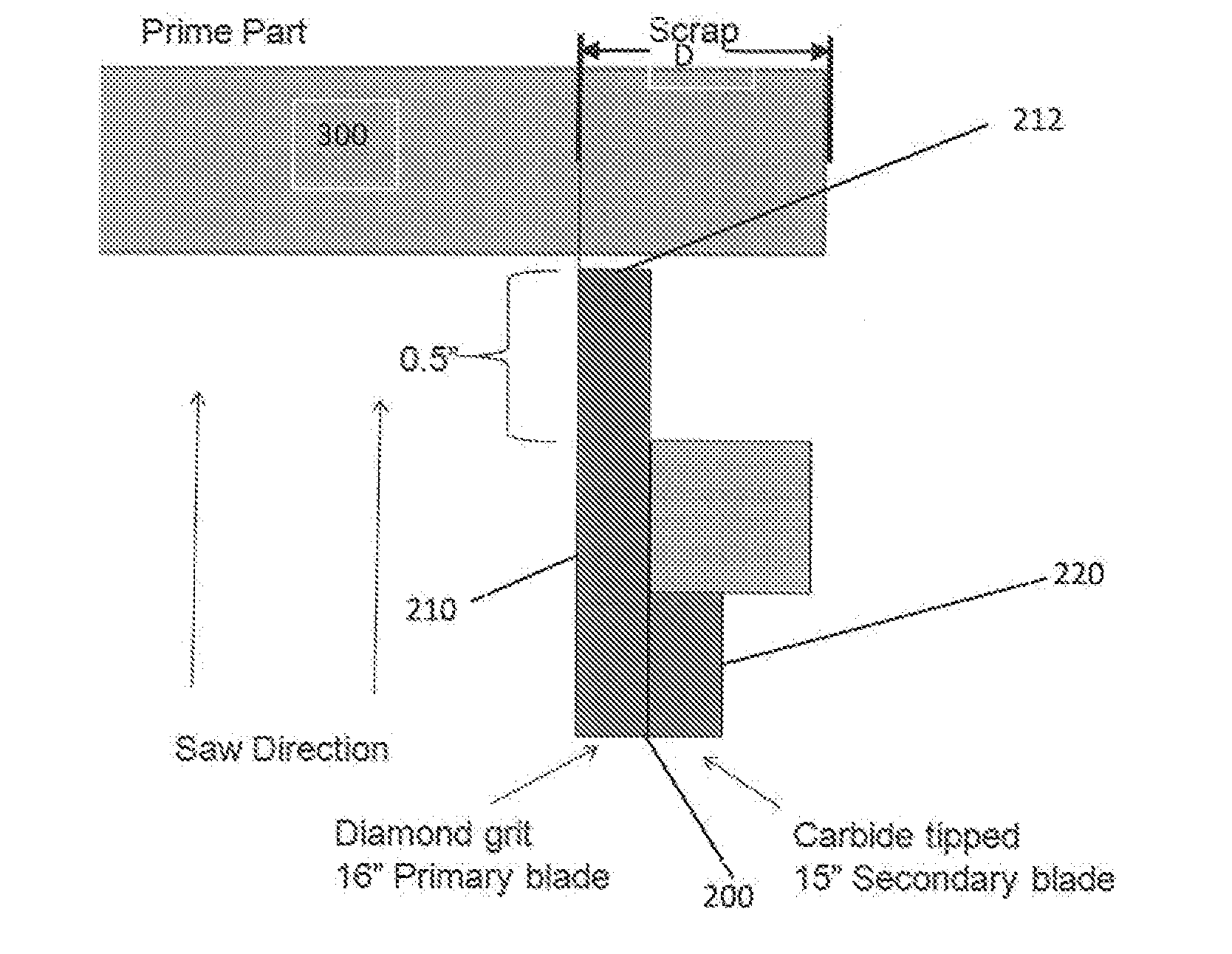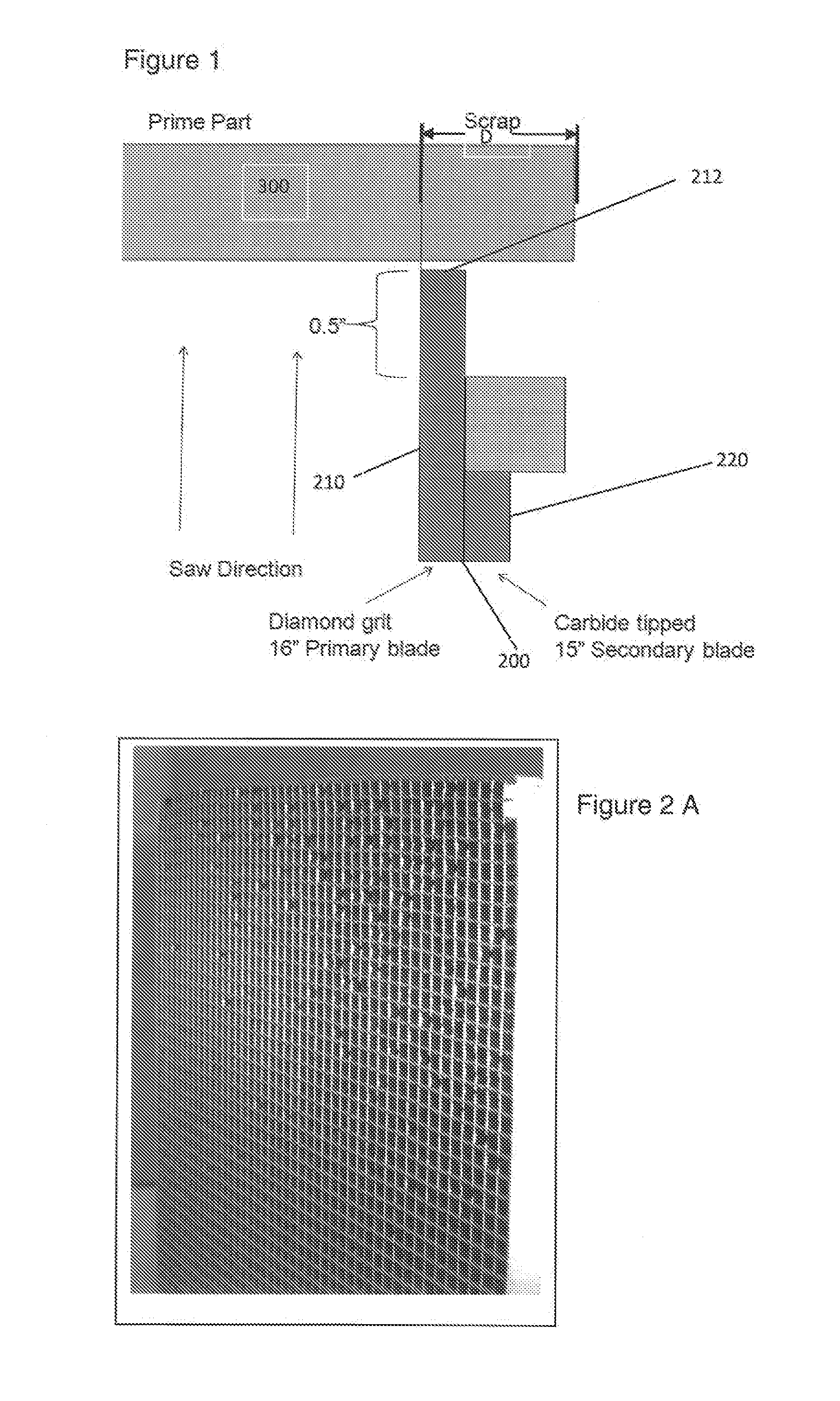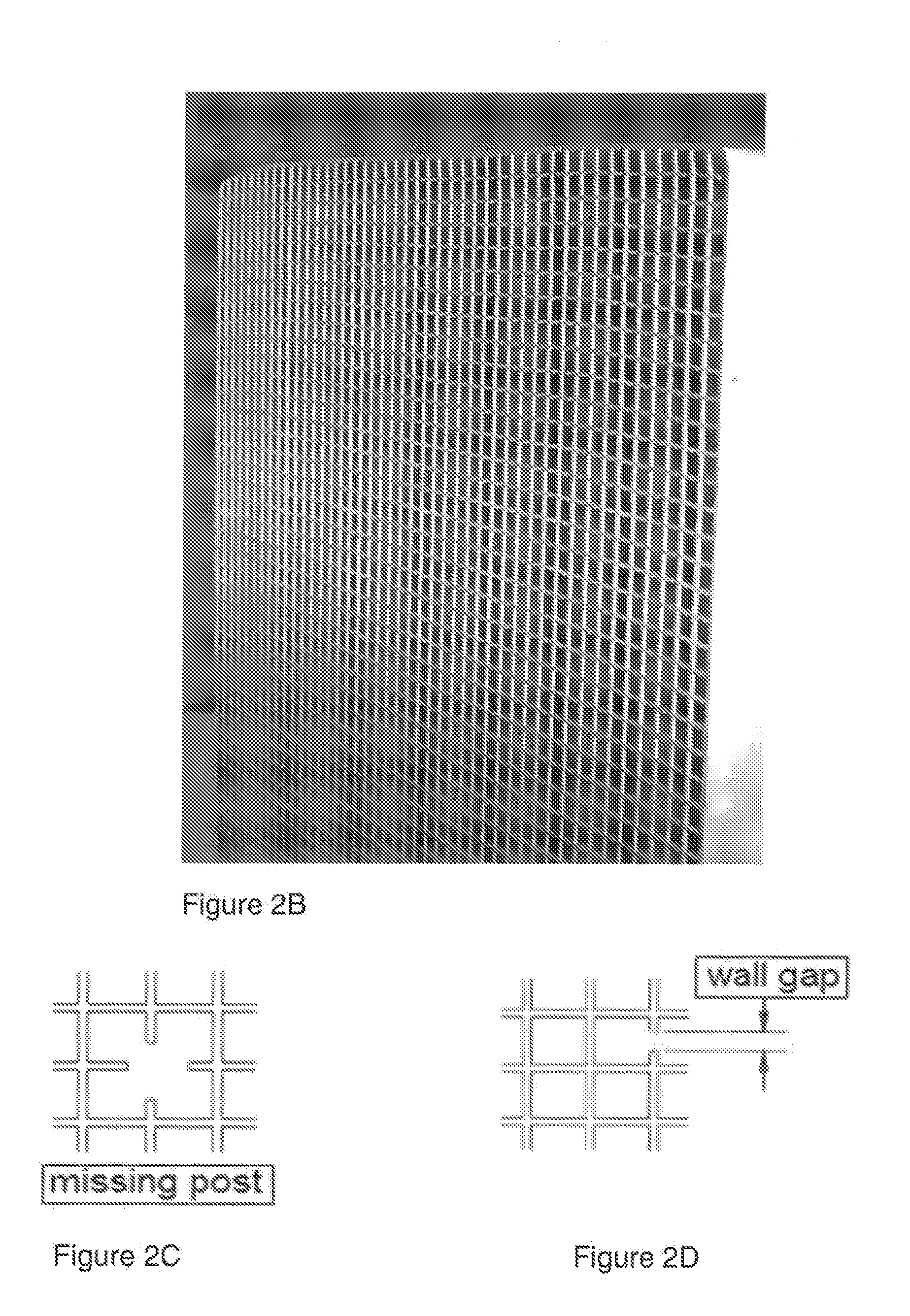Method and apparatus for preparing ceramic body segments
- Summary
- Abstract
- Description
- Claims
- Application Information
AI Technical Summary
Benefits of technology
Problems solved by technology
Method used
Image
Examples
example 1
Circular Saw 200
[0047]As an illustrative example, as shown in FIGS. 1, 4A and 4B, a circular saw style ceramic log cutting apparatus 100 is presented. The apparatus 100 includes a dual bladed cutting member 200, a ceramic log 300, a nesting fixture 110, and motors (not shown) that drive the member 200.
[0048]The dual bladed cutting member 200 in this example consists of a first blade 210 and a second blade 220 abutting one another, as illustrated in FIG. 1. In this example, the first blade 210 is a circular blade with a diameter of about 16 in (406 mm) and the second blade with a diameter of about 15.0 in. (381 mm). Both blades rotate about a common axis 9 in the same direction) and a leading edge 222 of the cutting surface of the second blade 220 is off-set inside that of a leading edge 212 of the cutting surface of the first blade 210 by about 0.5 in. (12.5 mm). Blade 210 is an abrasive saw, in this example a diamond grit blade (0.050 in. (1.3 mm)) core thickness and an 80 / 100 diam...
example 2
Band Saw / Reciprocating Saw 500
[0050]As another illustrative example, a band saw / reciprocating saw style ceramic log cutting apparatus 100 is presented. The cutting member 500 is similar to that presented in the circular saw example above in that a leading edge 522 of the cutting surface of the second blade 520 is off-set inside that of a leading edge 512 of the cutting surface of the first blade 510 by about 0.5 in. (12.5 mm). Blade 510 is an abrasive saw, in this example a diamond grit blade (0.050 in. (1.3 mm)) core thickness and an 80 / 100 diamond grit) and blade 520 is a serrated blade with a single sided set, more specifically a carbide tipped blade (0.125 in. kerf (3.2 mm)). The member does not rotate, but has a linear motion (one direction for the band saw and two for the reciprocating saw) of about 1700 m / minute and feed into the log 300 at a rate ranging from about 10 to 40 cm / minute to perform the cutting of the log 300.
example 3
Circular Saw 600
[0051]In an illustrative example, two circular saw style ceramic log cutting methods are presented. In a first set-up (YL11), a log 300 is placed such that the bottom of the log 300 is disposed nearer the bottom of the circular saw 600. In a second set-up (YL14), the log 300 is placed such that it is nearer the axis of rotation of the saw 600, both set-ups as shown in FIG. 3A. Two groups of seven logs 300 each are processed as described in example 1 above, with the location of the log 300 relative to the axis of rotation of the saw 600 being different for each group. Table 1 shows the result and illustrates that the average yield of “defect free” parts is significantly higher when the log is nearer to the axis of rotation of the saw 600. FIG. 38 is a bar chart of the results from Table 1.
TABLE 1PartsPartsTop FaceBottom FaceBilletspassedfailedCrack YieldCrack Yield0.050″ blade02060%75%0.040″ blade41786%86%YL11-106433%67%YL11-2125361%81%YL11-396363%82%YL11-457342%50%YL...
PUM
| Property | Measurement | Unit |
|---|---|---|
| Length | aaaaa | aaaaa |
| Percent by mass | aaaaa | aaaaa |
| Length | aaaaa | aaaaa |
Abstract
Description
Claims
Application Information
 Login to View More
Login to View More - R&D
- Intellectual Property
- Life Sciences
- Materials
- Tech Scout
- Unparalleled Data Quality
- Higher Quality Content
- 60% Fewer Hallucinations
Browse by: Latest US Patents, China's latest patents, Technical Efficacy Thesaurus, Application Domain, Technology Topic, Popular Technical Reports.
© 2025 PatSnap. All rights reserved.Legal|Privacy policy|Modern Slavery Act Transparency Statement|Sitemap|About US| Contact US: help@patsnap.com



